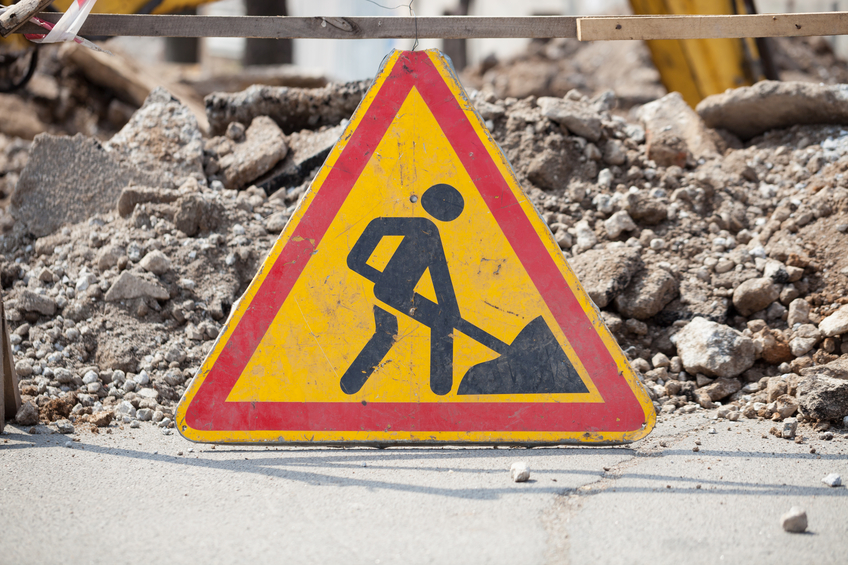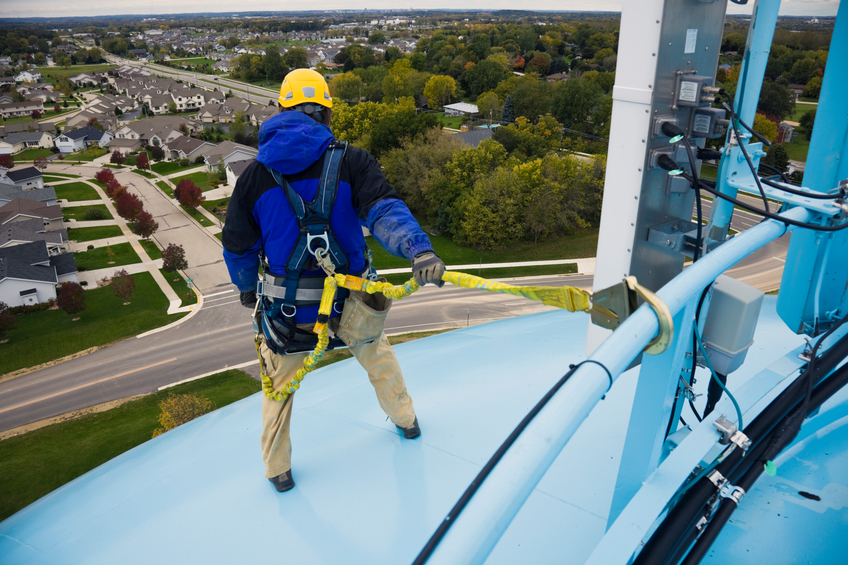North Carolina Construction Safety and Ethics 15 PDH Discount Package 3
Electrical Safety (E06-005)
Safe Rooms and Shelters - Design Guidance (F04-003)
Stairways and Ladders (C01-012)
Free Speech vs. Regulation of Professional Engineers (LE1-009)

This online engineering PDH course provides information on effective ergonomic interventions that help lower the physical demands of manual material handling (MMH) work.
Manual material handling work contributes to a large percentage of over half a million cases of musculoskeletal disorders reported annually in the United States. Musculoskeletal disorders often involve strains and sprains to the lower back, shoulders, and upper limbs. They can result in protracted pain, disability, medical treatment, and financial stress for those afflicted with them.
Effective ergonomic interventions can lower the physical demands of MMH work tasks, thereby lowering the incidence and severity of the musculoskeletal injuries they can cause. Their potential for reducing injury-related costs alone make ergonomic interventions a useful tool for improving a company’s productivity, product quality, and overall business competitiveness.
This 3 PDH online course is applicable to engineers, managers and supervisors who are interested in learning more about ergonomic interventions that reduce the physical demands of manual material handling work.
This PE continuing education course is intended to provide you with the following specific knowledge and skills:
- Familiarizing with the basics of manual material handling
- Understanding the importance of improving the workplace
- Understanding the conditions associated with the development of injuries in manual material handling tasks
- Learning about the different types of ergonomic improvements
- Knowing easier ways to manually lift, lower, fill, or empty containers
- Exploring alternatives to the manual handling of individual containers
Upon successful completion of the quiz, print your Certificate of Completion instantly. (Note: if you are paying by check or money order, you will be able to print it after we receive your payment.) For your convenience, we will also email it to you. Please note that you can log in to your account at any time to access and print your Certificate of Completion.

This online engineering PDH course describes the hazards of electrical work and basic approaches to working safely.
Whenever working with power tools or on electrical circuits, there is a risk of electrical hazards, especially electrical shock. Anyone can be exposed to these hazards at home or at work. Workers are exposed to more hazards because job sites can be cluttered with tools and materials, fast-paced, and open to the weather. Risk is also higher at work because many jobs involve electric power tools.
Electrical trades workers must pay special attention to electrical hazards because they work on electrical circuits. Coming in contact with an electrical voltage can cause current to flow through the body, resulting in electrical shock and burns. Serious injury or even death may occur. As a source of energy, electricity is used without much thought about the hazards it can cause. Because electricity is a familiar part of our lives, it often is not treated with enough caution. As a result, an average of one worker is electrocuted on the job every day of every year!
This 6 PDH online course is applicable to electrical and mechanical engineers, electricians, plant operators, construction personnel and others seeking an understanding of the basics of electrical system safety.
This PE continuing education course is intended to provide you with the following specific knowledge and skills:
- Understanding the dangers of electricity
- Understanding the dangers of electric shocks
- Familiarizing with the burns caused by electricity
- Learning how to recognize, evaluate, and control hazards
- Knowing how to work safely
Once you complete your course review, you need to take a multiple-choice quiz consisting of thirty (30) questions to earn 6 PDH credits. The quiz will be based on the entire document.
Upon successful completion of the quiz, print your Certificate of Completion instantly. (Note: if you are paying by check or money order, you will be able to print it after we receive your payment.) For your convenience, we will also email it to you. Please note that you can log in to your account at any time to access and print your Certificate of Completion.

This online engineering PDH course presents guidance on the design and construction of shelters in the work place, home, or community building to provide the required level of protection that may be assumed by building owners when deciding to build a shelter in response to the manmade CBRE threats as defined in the National Response Plan (
This course considers shelter design concepts that relate to the type of shelter being designed and where it may be located. It discusses how shelter use (either single or multiple) may affect the type of shelter selected and the location of that shelter on a particular site. It also describes key operations zones in and around a shelter that need to be taken into consideration as a means to provide safe ingress and egress and medical assistance to victims of a manmade event (terrorist attack or technological accident). The objective of this chapter is to provide a broad vision on how a shelter should be designed to protect against catastrophic events.
This 4 PDH online course is applicable to engineers, planners, architects, landscape designers, construction and operations personnel, security and law enforcement agents, as well as consultants and contractors who are interested in gaining a better understanding in the design and construction of safe rooms and shelters.
This PE continuing education course is intended to provide you with the following specific knowledge and skills:
- Understating explosive threats and CBR attacks
- Learning the different blast and CBR levels of protection
- Familiarizing with the different types of shelters
- Learning how to site a shelter
- Incorporating protective design criteria including, travel time, accessibility, occupancy duration, TFA floor space and ventilation requirements
- Incorporating other safety design considerations including lighting, emergency power, route marking and signage
- Incorporating building evacuation design considerations
- Understanding and designing the different key operation zones
In this professional engineering CEU course, you need to review Chapter 1 "Design Guidance" of the FEMA Publication tilted, "Safe Rooms and Shelters" (FEMA 453).
Upon successful completion of the quiz, print your Certificate of Completion instantly. (Note: if you are paying by check or money order, you will be able to print it after we receive your payment.) For your convenience, we will also email it to you. Please note that you can log in to your account at any time to access and print your Certificate of Completion.

This online engineering PDH course provides guidance on OSHA construction safety and health standards that apply to all stairways and ladders used in construction, alteration, repair, painting, decorating and demolition of worksites.
Stairways and ladders are major sources of injuries and fatalities among construction workers, and many of the injuries are serious enough to require time off the job. OSHA recognizes that carelessness/misuse in using stairways and ladders presents serious danger to all workers involved. Therefore, OSHA developed the "Stairways and Ladders" guidance document to minimize hazards and protect employees from construction related accidents.
This 1 PDH online course is applicable to all engineers, employers, building owners, facility managers, and all personnel working on construction projects.
This PE continuing education course is intended to provide you with the following specific knowledge and skills:
- Understanding the general requirements for stairways and ladders
- Learning about the specific rules and safety precautions for all types of ladders
- Learning about the specific rules and safety precautions that govern stairways
In this professional engineering CEU course, you need to review OSHA 3124-12R, "Stairways and Ladders".
Upon successful completion of the quiz, print your Certificate of Completion instantly. (Note: if you are paying by check or money order, you will be able to print it after we receive your payment.) For your convenience, we will also email it to you. Please note that you can log in to your account at any time to access and print your Certificate of Completion.

This online engineering PDH course will establish the relationship between the actions of a licensing board for professional engineers and the Constitutional right of free speech.
This course discusses the background and findings of a legal case that arose when a state licensing board for professional engineers attempted to restrict the right of an engineer from speaking about a public safety issue. Actual legal documents and associated correspondence are discussed, and their implications analyzed.
The 1 PDH online course is intended for all registered professional engineers wanting to know about the relation between constitutionally protected free speech and the powers of a licensing board for professional engineers.
This PE continuing education course is intended to provide you with the following specific knowledge and skills:
- Understanding the value of free speech in discovering the best solution to technical problems
- Realizing the difference between protected and unprotected speech
- Knowing an example in which the actions of a PE licensing board was limited by the Constitutional right of free speech
- Familiarizing with the meaning of a board letter that announces the opening of an investigation
- Understanding the meaning and use of a Notice to Impose a Civil Penalty
- Understanding the significance of working outside the context of an employment or contractual relationship
Upon successful completion of the quiz, print your Certificate of Completion instantly. (Note: if you are paying by check or money order, you will be able to print it after we receive your payment.) For your convenience, we will also email it to you. Please note that you can log in to your account at any time to access and print your Certificate of Completion.